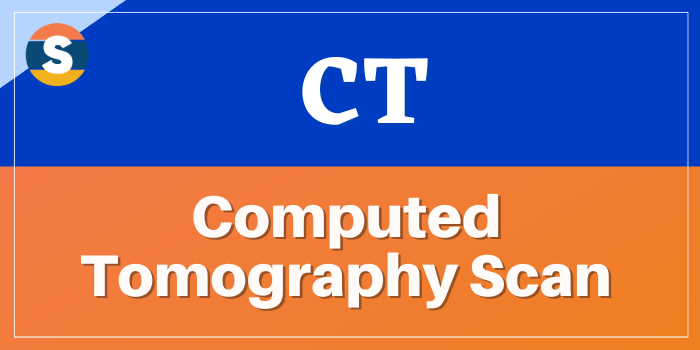
The Full form of CT Scan is Computed Tomography scan. CT scan is a painless X-ray test in which a computer generates cross-section views of a patient’s anatomy. It can identify normal and abnormal structures, and it can be used to guide procedures. Contrast material is sometimes used in CT scan. A patient who is allergic to contrast materials or iodine and is scheduled to have a CT scan should notify the radiology staff and the physician about the allergy. It is also known as Computerized Axial Tomography (CAT) scan. Digital geometry processing is used to further generate a 3-D volume of the inside of the object from a large series of 2-D radiographic images taken around a single axis of rotation. Medical imaging is the most common application of X-ray CT. Its cross-sectional images are used for diagnostic and therapeutic purposes in various medical disciplines. The term “Computed Tomography” (CT) is often used to refer to X-ray CT, because it is the most commonly known form. But, many other types of CT exist, such as SPECT (Single-Photon Emission Computed Tomography) and PET (Positron Emission Tomography). A predecessor of CT, X-ray tomography, is one form of radiography, along with many other forms of tomographic and non-tomographic radiography.